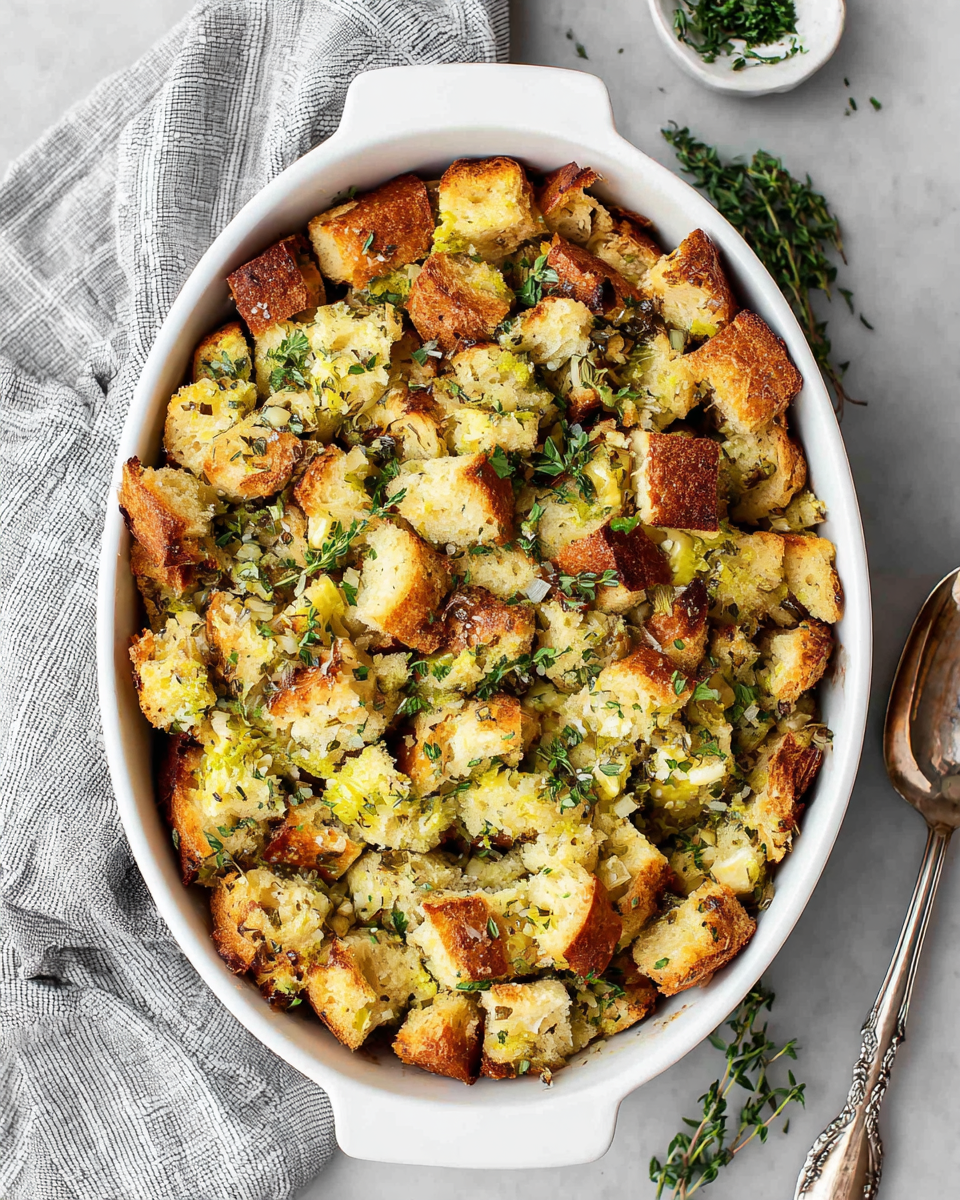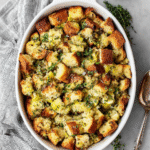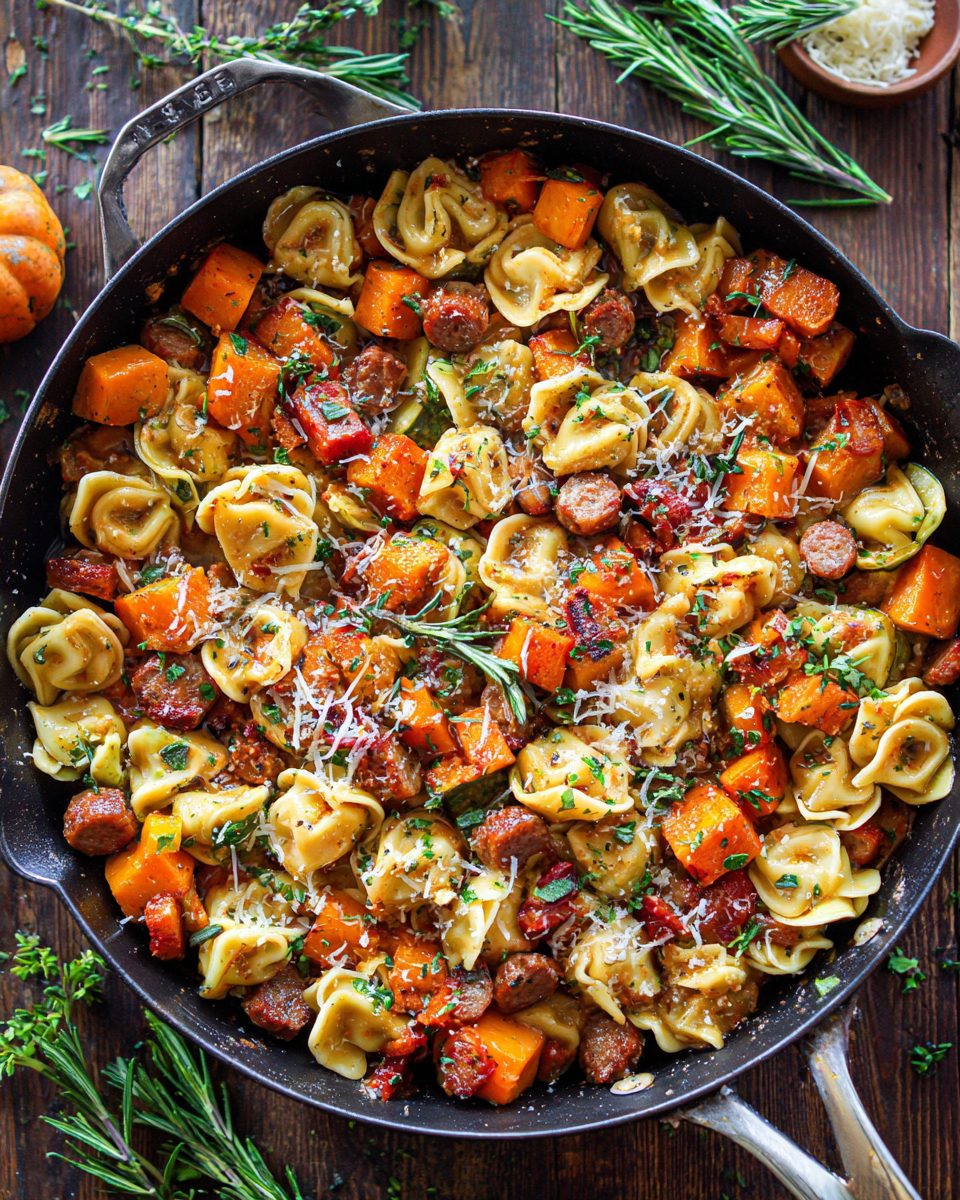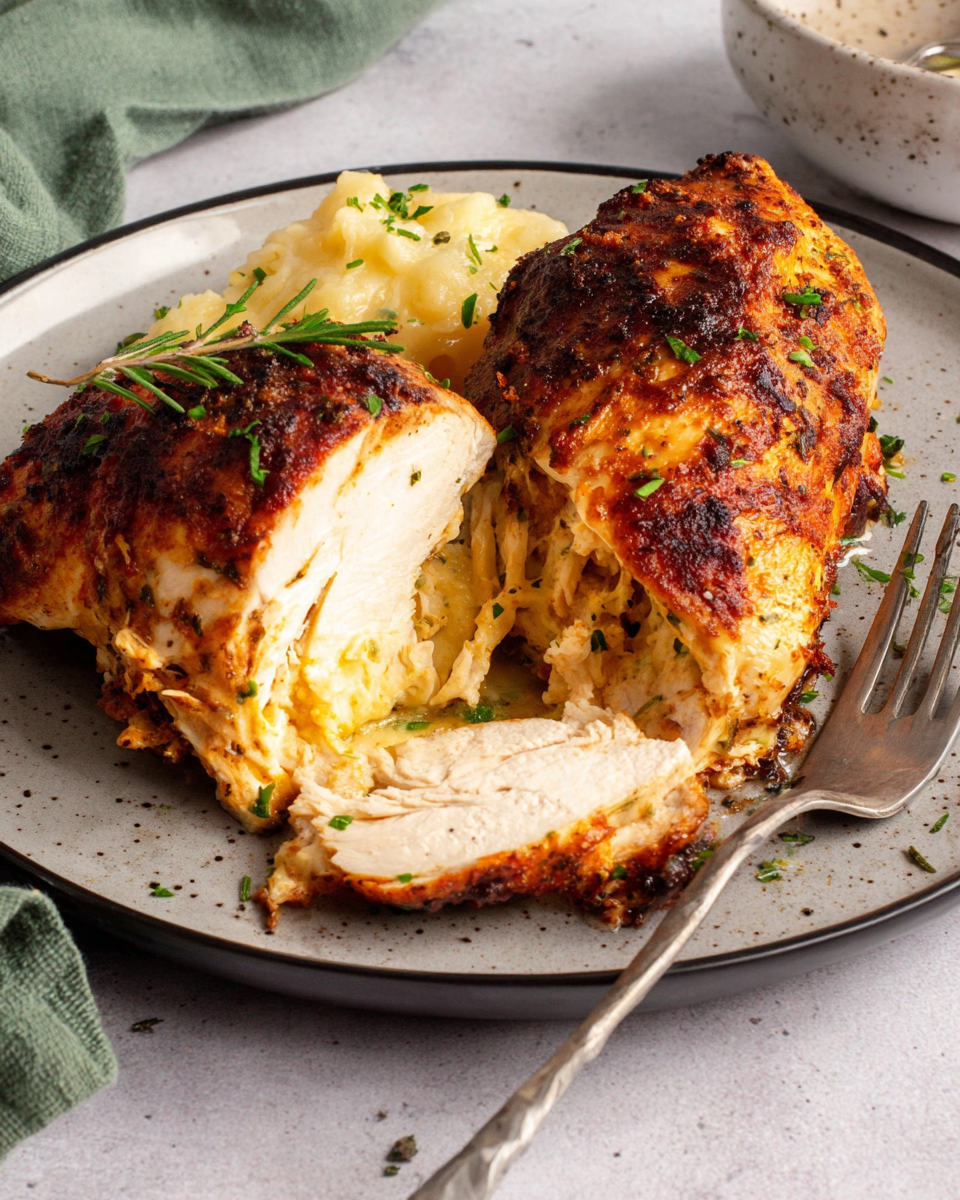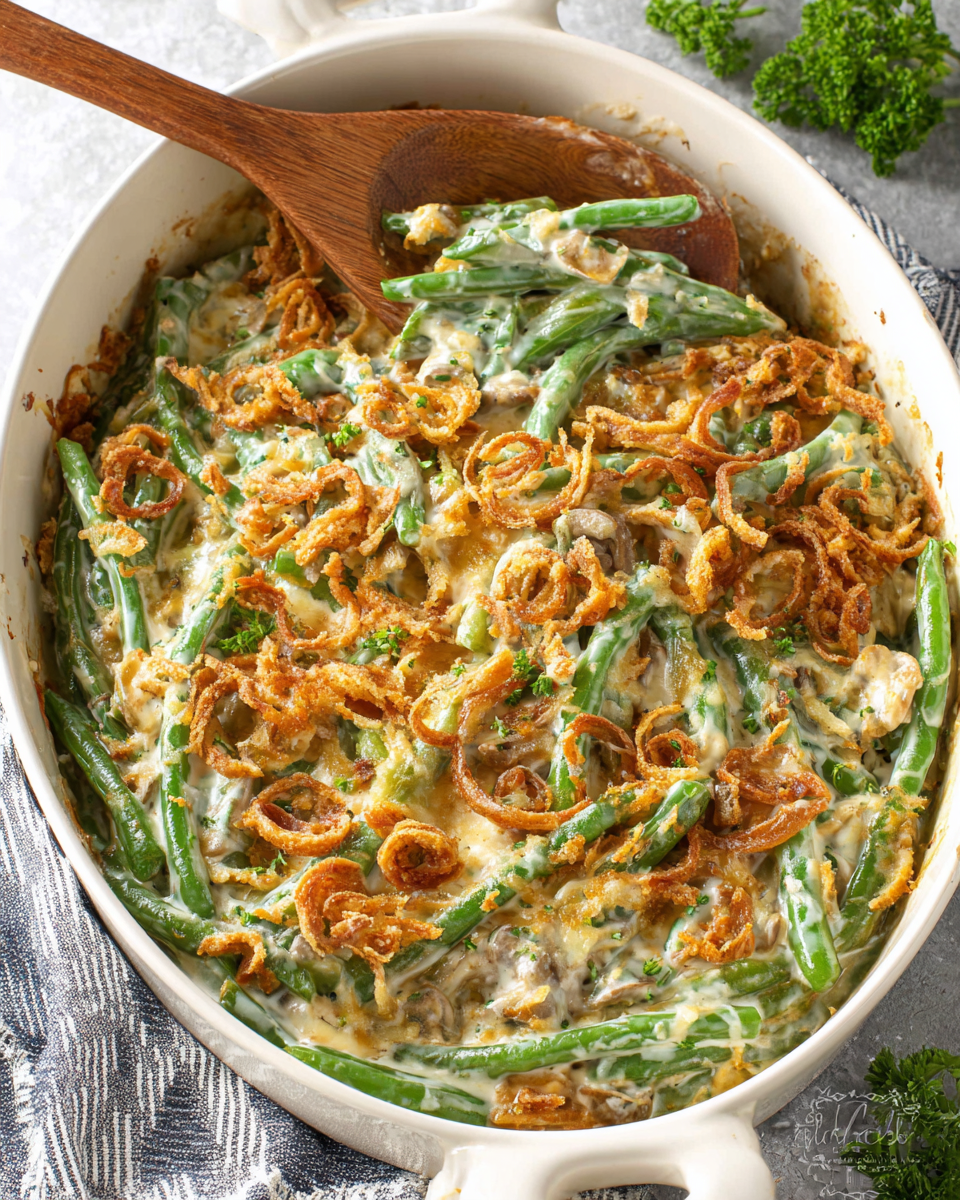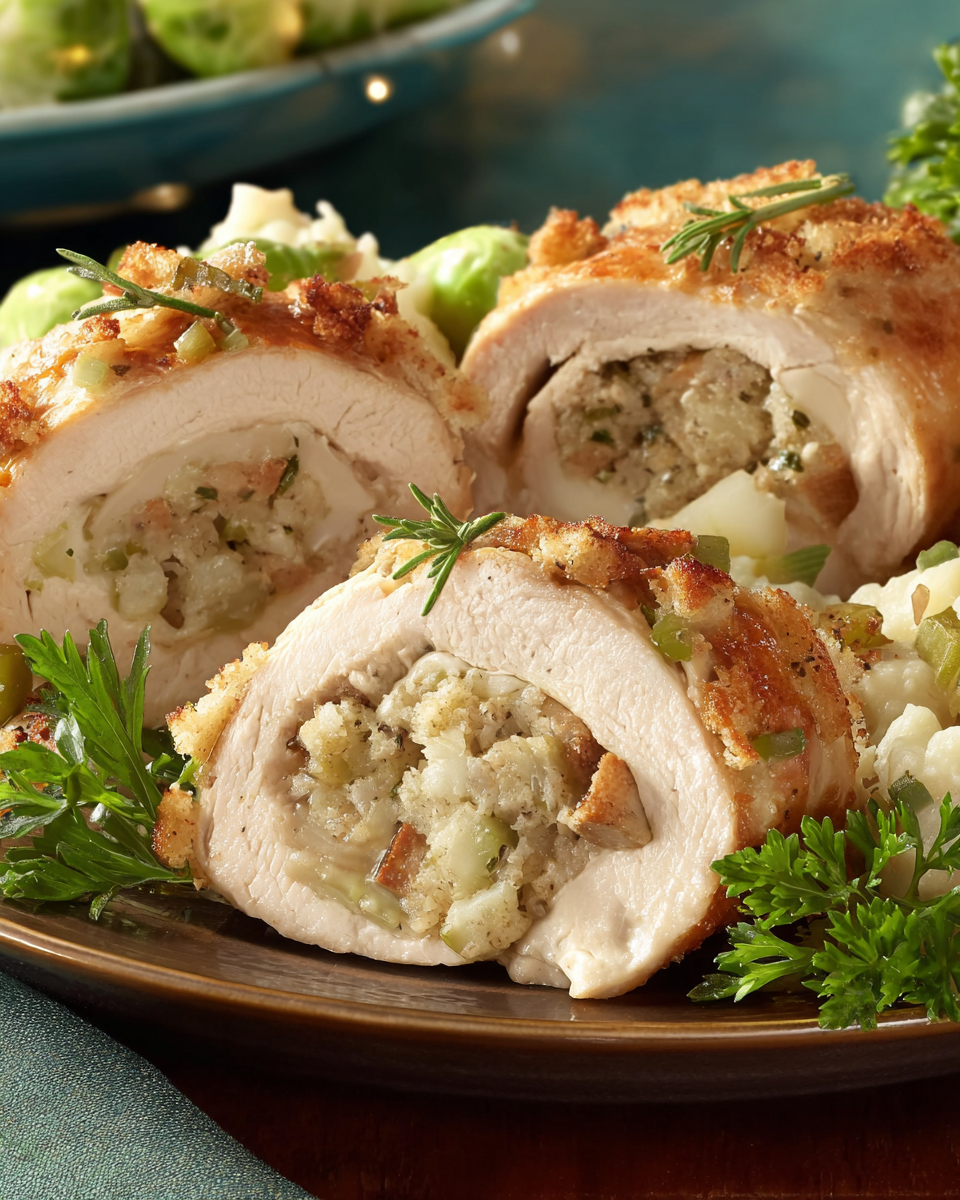Introduction
As the holidays approach, one dish takes center stage at the dinner table—stuffing. Whether your gathering features turkey, ham, or a vegetarian option, stuffing elevates any meal. It's not just a side; it's an integral part of the celebration, rich with flavor and nostalgia.
The beauty of homemade stuffing lies in its versatility. You can customize it with your favorite herbs and ingredients to create a unique flavor profile that reflects your holiday spirit. This recipe combines traditional components with a few modern twists for a stuffing that will be remembered long after the last crumb is gone.
Ingredients
- 1 loaf of day-old bread (about 1 pound)
Bread acts as the foundation of your stuffing, providing texture and the ability to absorb flavors from the broth and seasonings. Using day-old bread helps maintain a perfect balance between softness and structure. - 4 tablespoons unsalted butter
Butter adds richness and depth to your stuffing, ensuring a moist and flavorful final dish. It also helps sauté vegetables, allowing their flavors to meld beautifully. - 1 medium onion, diced
Onion brings a natural sweetness and aromatic quality to the stuffing, enhancing the overall flavor. When sautéed, it becomes tender and caramelized, which delivers a rich base layer. - 2 stalks celery, diced
Celery adds a satisfying crunch and freshness to your stuffing. It balances the richer ingredients, offering a medley of textures that keeps every bite interesting. - 2-3 cloves garlic, minced
Garlic introduces a robust, savory note that elevates the dish. It complements the other flavors and adds a fragrant quality that tantalizes the palate. - 2 teaspoons dried sage
Sage is a classic herb used in stuffing, providing a warm, earthy flavor that is particularly iconic in holiday dishes. It pairs beautifully with poultry, making it an essential component. - 1 teaspoon dried thyme
Thyme contributes a subtle minty and earthy depth that enhances the overall flavor complexity of the stuffing. Its aromatic profile invites warmth and coziness. - 1 teaspoon salt
Salt amplifies all the flavors, making sure each ingredient stands out without overpowering the dish. It’s crucial for balancing the taste. - ½ teaspoon black pepper
Black pepper adds a mild kick to the stuffing. It elevates the flavors without overwhelming them and adds a pleasing contrast to the richness of the other ingredients. - 2 cups low-sodium chicken or vegetable broth
Broth serves as the moistened element for the bread, allowing it to soak up flavors. Using low-sodium broth ensures you can control the saltiness of the stuffing. - 1 cup chopped fresh parsley
Fresh parsley brings brightness and a touch of color to your stuffing, offering an herbaceous flavor that lightens the rich mixture. - 1-2 cups optional add-ins (like cooked sausage, nuts, or dried fruit)
Add-ins introduce unique flavors and textures, making your stuffing distinctive. Incorporating cooked sausage adds heartiness, while nuts offer crunch, and dried fruit gives sweetness.
Directions & Preparation
Step 1: Preheat your oven to 350°F (175°C).
Preheating the oven ensures an even cooking temperature, which is crucial for achieving that perfect golden crust on your stuffing. An adequately heated oven also helps the stuffing cook through uniformly.
Step 2: Cut the bread into 1-inch cubes and let it sit out overnight.
Allowing the bread to dry out is key for maximizing its ability to soak up the broth without becoming overly soggy. This step guarantees the stuffing holds its shape and has the right texture.
Step 3: In a large skillet, melt the butter over medium heat.
Melting the butter provides a rich base for sautéing the vegetables. It also serves as the medium that allows the flavors of the onion and celery to develop beautifully, leading to that comforting aroma.
Step 4: Add the onion and celery, cooking until softened, about 5-7 minutes.
Cooking the onion and celery until they're tender enhances their natural sweetness and ensures they integrate well into the stuffing. This step allows the flavors to develop and bloom before mixing them with the bread.
Step 5: Stir in the garlic, sage, thyme, salt, and pepper; cook for another minute.
Adding garlic and herbs at this stage allows their flavors to infuse into the butter and vegetables, creating a fragrant base. Cooking just until fragrant helps prevent the garlic from burning, which can lead to bitterness.
Step 6: In a large bowl, combine the bread cubes with the sautéed mixture.
Combining the bread with the sautéed vegetables ensures every bite is infused with flavor. This mixing step allows the bread to absorb some of the buttery, aromatic goodness.
Step 7: Pour in the broth gradually, mixing gently until evenly moistened.
Gradually adding the broth prevents the stuffing from becoming too soggy. It’s essential to mix gently to keep the bread cubes intact, allowing them to absorb the liquid without falling apart.
Step 8: Fold in the fresh parsley and any optional add-ins you desire.
Incorporating parsley at this stage maintains its vibrant green color and fresh flavor. If you’re adding ingredients like sausage or nuts, ensure they’re distributed evenly throughout for balanced taste.
Step 9: Transfer the stuffing to a greased baking dish and cover with foil.
Covering the baking dish with foil helps steam the stuffing initially, keeping it moist. This method also prevents it from browning too quickly before the inside is cooked through.
Step 10: Bake for 25-30 minutes, then remove the foil and bake for an additional 15-20 minutes.
Baking covered ensures a tender stuffing, while removing the foil allows for a perfect golden crust to develop. Watch for that tantalizing golden-brown color, signaling it’s ready to serve.
Step 11: Let the stuffing sit for 10 minutes before serving.
Letting the stuffing rest allows flavors to meld further and makes it easier to serve. This resting period also helps it firm up slightly, giving it a better texture.

Why Day-Old Bread Works Best
Using day-old bread is essential for achieving the ideal stuffing texture. Fresh bread can lead to too much moisture and result in a mushy consistency. Day-old bread is drier, allowing it to soak up the flavorful broth without becoming overly soggy. This characteristic keeps the stuffing light and fluffy while still capturing the essence of the savory ingredients.
Exploring Flavorful Add-Ins
Personalizing your stuffing with unique add-ins can transform a classic recipe into something memorable. Consider including cooked sausage for a hearty, savory twist, or nuts for a satisfying crunch. Adding dried cranberries or apples introduces a sweet layer that beautifully contrasts with the savory notes. These add-ins not only enhance flavor but also create a delightful textural experience.
Perfecting the Broth-to-Bread Ratio
Finding the right broth-to-bread ratio is vital for mastering your stuffing’s consistency. Too little broth can result in dry stuffing that lacks flavor, while too much can lead to a soggy mess. Start by using a gradual approach, adding broth slowly while mixing until you reach the desired level of moisture. The bread should be well-moistened but not swimming in liquid for optimum texture and flavor.
FAQs
What if my stuffing comes out too dry?
If your stuffing is too dry, you can add a bit more broth and gently mix to incorporate moisture without breaking apart the bread.
Can I use gluten-free bread for this recipe?
Yes, substituting with gluten-free bread is a great way to accommodate dietary needs. Just ensure you adjust the broth for any differences in absorbency.
What herbs can I use instead of sage and thyme?
If you don’t have sage and thyme, consider using poultry seasoning or oregano, which can also add aromatic flavors to your stuffing.
How can I make my stuffing more flavorful?
To enhance flavor, consider sautéing mushrooms or adding a splash of white wine to the vegetable mixture for depth and richness.
What should I do if my stuffing is too soggy?
If your stuffing ends up too soggy, you can bake it uncovered for a little longer to help evaporate excess moisture and achieve a better texture.
Can I prepare stuffing in advance and bake it later?
Yes, you can prepare the stuffing a day ahead and store it in the refrigerator. Just add a bit of broth before baking if it seems dry.
Conclusion
This homemade stuffing recipe is a wonderful way to elevate your holiday meal. By combining classic flavors with personal touches, you can create a dish that resonates with tradition while also reflecting your individual taste.
As you gather around the table, enjoy the company of family and friends, and savor the delicious stuffing you've crafted with love. It's not just a side dish; it's a cherished memory in the making.
Recipe Card
Delightful Homemade Stuffing for Holiday Feasts
Ingredients
- 1 loaf of day-old bread about 1 pound
- 4 tablespoons unsalted butter
- 1 medium onion diced
- 2 stalks celery diced
- 2-3 cloves garlic minced
- 2 teaspoons dried sage
- 1 teaspoon dried thyme
- 1 teaspoon salt
- ½ teaspoon black pepper
- 2 cups low-sodium chicken or vegetable broth
- 1 cup chopped fresh parsley
- 1-2 cups optional add-ins like cooked sausage, nuts, or dried fruit
Instructions
- Preheat your oven to 350°F (175°C).
- Cut the bread into 1-inch cubes and let it sit out overnight.
- In a large skillet, melt the butter over medium heat.
- Add the onion and celery, cooking until softened, about 5-7 minutes.
- Stir in the garlic, sage, thyme, salt, and pepper; cook for another minute.
- In a large bowl, combine the bread cubes with the sautéed mixture.
- Pour in the broth gradually, mixing gently until evenly moistened.
- Fold in the fresh parsley and any optional add-ins you desire.
- Transfer the stuffing to a greased baking dish and cover with foil.
- Bake for 25-30 minutes, then remove the foil and bake for an additional 15-20 minutes.
- Let the stuffing sit for 10 minutes before serving.
Notes
Additional serving suggestions: pair with a crisp salad, garlic bread, or roasted seasonal vegetables for balance.
For make-ahead, prep components separately and assemble just before heating to preserve texture.
Taste and adjust with acid (lemon/vinegar) and salt right at the end to wake up flavors.
